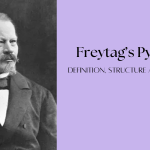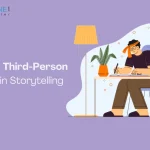Looking to publish a Historical Fiction Book? Historical fiction is a literary genre in which the plot is set in the past. For authenticity, historical novels portray as many characteristics of the time period as possible, including social standards, etiquette, customs, and traditions.
The setting is what makes a historical novel credible. Historical fiction is set in a genuine location within a culturally identifiable historical period. The story’s facts and actions may be a combination of true happenings and those from the author’s imagination as they fill in the blanks. Characters may be made up or based on real persons.
But everything about them— their attitudes and appearance, the way they communicate, and the issues they experience— should be appropriate for the time. Of course, research is essential for an author to get all of this right.
Authors are always free to use their imagination, but the most rewarding works of Historical Fiction have been meticulously studied down to the last perfume, button, turn of phrase, and cloud in the sky.
Historical fiction can interact with a lot of other genres to create different sub-genres-
1. Historical Fantasy- Many of the “rules” of pure historical fiction apply to historical fantasy. However, it deviates when speculative features are introduced. Dragons, magicians, immortals, magical swords, and extraordinary abilities Elements that one may find in a more typical fantasy story.
2. Alternative History- Alternative history puts the concept of speculative aspects in a completely new direction. These stories begin in the same way as historical fiction and adhere to all of the “rules.” However, their foundation is centred on the question, “What if the events we know happened in a completely different way?” What would have happened, for example, if Wellington had been defeated at Waterloo? Or what if Nicholas II was more progressive and not preoccupied by his only son’s haemophilia? Or what if Lincoln had not been assassinated, leaving a racist in command of Reconstruction?
3. Historical Mystery- Historical mystery is a perfect example of where genres actually collide. Both genres’ rules apply. In order for the mystery to work, the historical elements must be carefully created. Ellis Peters’ Brother Cadfael Chronicles is a good example.
4. Historical Romance- Historical romance is a subgenre of romance described by the Romance Writers of America as a romance set prior to the 1950s. There are, of course, distinct sub-genres based on the time period of the novel. Because the romance is central, these stories may take some artistic licence in depicting the historical environment.
You may also like: Ultimate Guide to Copy Editing: Tips, Techniques, and Tools
6 Best Historical Fiction Books to Read -
- Alias Grace by Margaret Atwood. Time Period and Setting: 1800s, Canada
- Beloved by Toni Morrison. Time Period and Setting: Late 1800s, U.S.
- The Book Thief by Markus Zusack. Time Period and Setting: 1930s, Germany
- The Dovekeepers by Alice Hoffman. Time Period and Setting: Ancient Israel
- Human Acts by Han Kang. Time Period and Setting: 1980s, South Korea
- One Hundred Years of Solitude By Gabriel Garcia Marquez. Time Period and Setting: 1800s, Colombia

Starting with writing your historical fiction novel can seem like a daunting task. Even for a seasoned writer, writing historical fiction can be difficult. You have the typical concerns – planning, plotting, structure, character development, and so on – but you also have to deal with the in-depth research and the essential aspects around historical truth and authenticity.
Here are a few tips that can inspire you and help you with the process:
- Free writing to generate ideas: If you want to write historical fiction but don’t know where to begin, spend 15 minutes in your notebook writing about a time or historical event you want to depict in fiction. Make a list of any assumptions you have about the period, cultural depictions of it in other books and films, and what specifically fascinates you about this historical period.
- Find an intriguing way to enter a time period: Consider adopting a historical era as a backdrop and inserting fictitious characters and events into that realm. Alternatively, take a historical event and develop fictitious individuals who witnessed it and were influenced by it.
- Do your research: Smaller nuances are just as crucial as getting the historical facts right. Make a list of the details in your work that you haven’t explored but should. These will most likely be minor details, such as the colour of refrigerators, whose precision will keep a reader interested and your story convincing.
- Build a world: World-building adds authenticity to historical fiction literature and provides readers an incentive to return. Include historical context for the world in which your story takes place, and balance those exotic facts with common, relatable ones to keep the plot grounded. However, don’t just add material for the sake of adding it; make sure that every aspect of your world-building promotes the tale.
You may also like: Insights from Bestselling Authors: The Art of Storytelling
Create & Publish Your Book For Free.
Here are a few tips on how you can begin with self-publishing your book:
- Know your type of Historical Fiction: Historical fiction has a lot of genres within it. You should be clear about where your novel lies. Your plot, characters, writing style, and personality as a writer will set you apart and make you stand out.
- Establish a publication budget for yourself: Self-publishing demands you to be an entrepreneur, and you are solely responsible for ensuring that your book looks professional. So the first step is to assess the cost of self-publishing your book. This should include a rough estimate of the costs for photography, design, and editorial support.
- Set your work in context: People will recognise you by your work. Your story will demonstrate your uniqueness as a writer. Be as realistic as possible, with a dash of humour and romance writing components such as ups and downs, the necessity for a climax, and the turn of events for good or bad.
- Find the best publishing house for you: Consider the advantages and disadvantages. Each publishing house will have something you want and something you don’t want; make sure to examine all of the options and scenarios before deciding on the best publishing house for you.
- Trust the process and coordinate with the team: Discuss everything with them, then sign a contract to start the process. Keep up with the process and enjoy the thrill of becoming a new author. Make sure you understand what you need on your cover page, your book’s genres, and who your target audience will be. Make an attempt to be a good sport as a client/author and keep your project team members motivated as well.
You may also read: How to Make Book Design More Appealing to the ReaderWhat makes historical fiction unique is that it takes readers to a time and place in the past. It can be an entertaining as well as an educational experience. BlueroseONE has published a variety of books in various of genres. Let your book be another exceptional story that we convey to people all around the world. You can contact us with your questions and manuscripts. We will be overjoyed to assist you in fulfilling your ambition of becoming a self-published author.
















